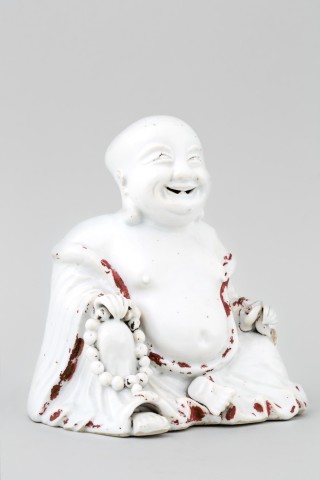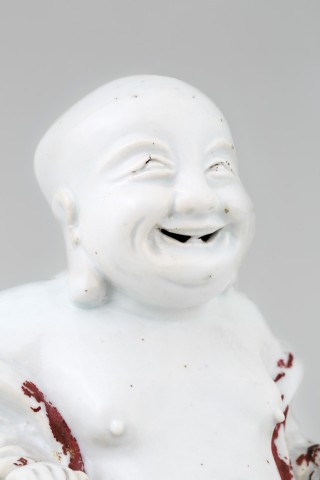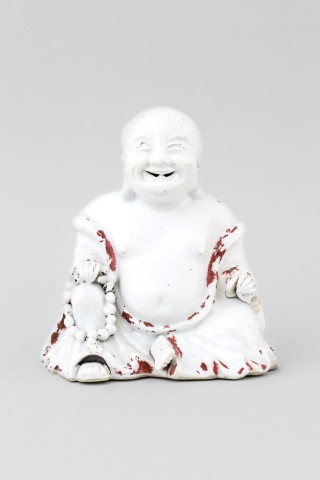Further images
The rotund figure seated in rajalilaasana, the pose of royal ease, wearing a cheerful expression and robes that cover the shoulders and legs, leaving with the chest and round belly bare, the robes with traces of red 'cold painting', he wears a string of prayer beads and holds another in his right hand.
Literature
According to Chinese history, Budai was an eccentric Chan (Zen) monk who lived in China in the 10th Century. Budai is usually identified with or seen as an incarnation of Maitreya, the future Buddha, so much so that the Budai image is one of the main forms in which Maitreya is depicted in China. He is almost always shown smiling or laughing, hence his nickname in Chinese, the Laughing Buddha. He carries his few possessions in a cloth sack, being poor but content. Budai in folklore is admired for his happiness, plenitude, and wisdom of contentment. One belief popular in folklore maintains that rubbing his belly brings wealth, good luck, and prosperity.
In Blanc de Chine: History and Connoisseurship Reviewed (2002, Curzon Press) by John Ayers, the author notes that a large number of pieces of Dehua porcelain show traces of colours such as red, green, black or gold. During the 18th century, 'cold painting', i.e., painted decoration applied without firing, on pieces of Dehua porcelain such as ours appears to have been common practice among European collectors (Ayres, p.54).






